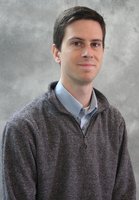
James Hays is the latest faculty recipient of an NSF CAREER award, a highly selective grant that the National Science Foundation awards to junior faculty members who are likely to become academic leaders of the future.
The research funded by James’s CAREER grant aims to understand, represent, and enhance scenes at the Internet-scale. James and his team are investigating "detail synthesis" tasks which alleviate camera shake, motion blur, defocus, or low resolution.
A key insight behind this research is that Internet scale photo collections and scene matching provide an ideal, context-specific statistical model which can be used to insert convincing texture and object detail. To improve scene matching the team will study attribute-based representations of scenes. Attributes are a powerful intermediate representation for the next generation of big data imaging research. James and his team are also developing a new introductory course for Brown students to explore big data computing across scientific disciplines and are creating an online community for visual computing education to benefit students interested in photography and programming.
The Faculty Early Career Development (CAREER) Program is a Foundation-wide activity that offers the National Science Foundation's most prestigious awards in support of junior faculty who exemplify the role of teacher-scholars through outstanding research, excellent education and the integration of education and research within the context of the mission of their organizations. Such activities should build a firm foundation for a lifetime of leadership in integrating education and research.
James received his B.S. in Computer Science from Georgia Institute of Technology in 2003 and completed his PhD in Computer Science at Carnegie Mellon University in 2009, where he was the recipient of a National Science Foundation Graduate Research Fellowship. He joined Brown after serving as a Postdoctoral scholar at MIT.
